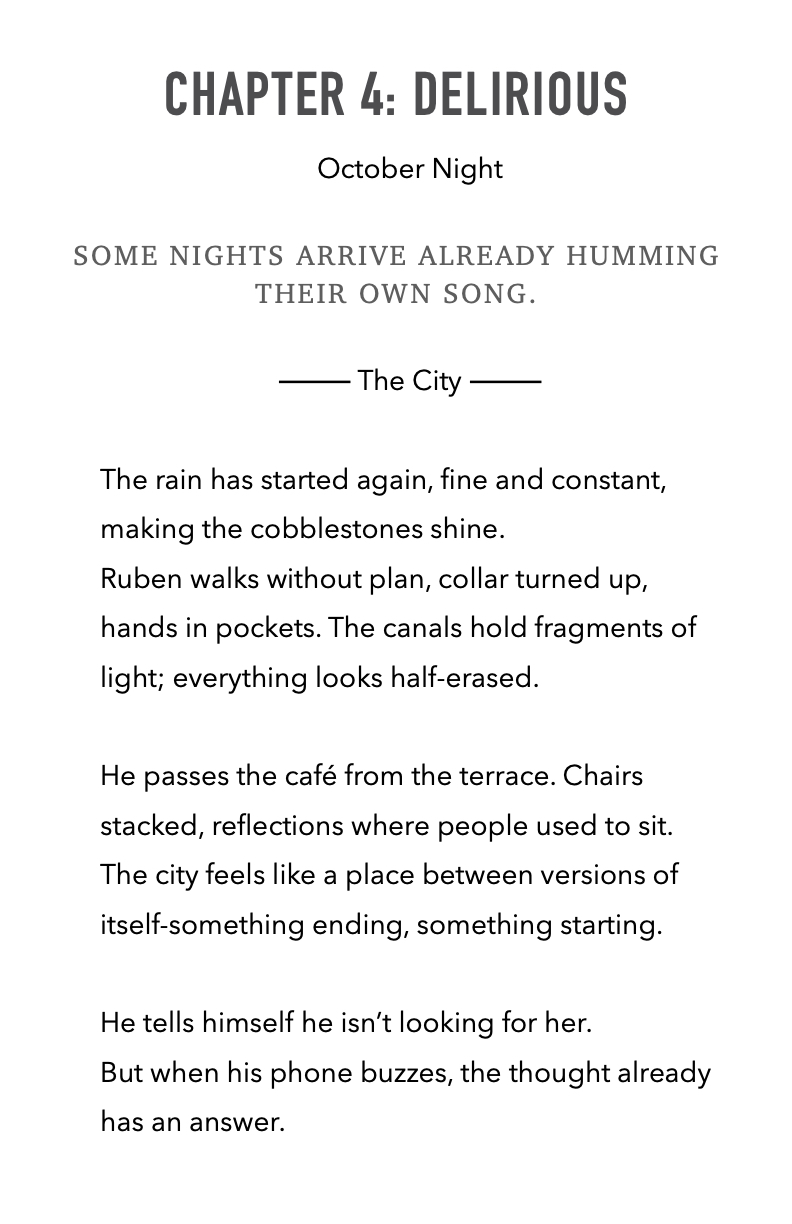Designing Desire — Audio Context
A short podcast that gives context to What Stays — how design, dating, and music shaped the story.
Listen: Designing Desire — How a Dutch-Caribbean Author Builds Connection
About the Book
Amsterdam is a city that remembers. The light on the water, the echo of a tram bell, a napkin left on a table — every trace becomes a kind of story.
When Ruben, a quiet designer from the Caribbean, and Ava, a Spanish-Latin painter learning to start again, meet by chance on a canal-side terrace, neither expects anything lasting. What follows are ten moments across three years: laughter and silence, distance and return, two people trying to hold what the city itself keeps letting go.
Told through the rhythm of rain and reflection, What Stays is a novel about seeing and being seen, about love that changes shape but never disappears.
Inside the Book

The Making of What Stays
A story that started with songs and became a novel through iteration, rhythm, dating and reflection.
What Stays didn’t begin as a book. It began as music. I was writing and releasing songs — small emotional snapshots about distance, memory, and the quiet spaces between people. Each track felt like a design prototype: a way to explore one feeling, one moment, one truth.
At some point, I realized the songs were connected. They shared tone, setting, and atmosphere. Fragments of the same emotional system. That’s when I started writing one story for every song. It was meant to be a short story collection, a companion to the music. But as I moved from track to track, something began to shift. The characters started to bleed into each other. The boundaries blurred. What I was really designing wasn’t multiple stories but one continuous narrative.
“Fammi Tua (explicit version)” became the turning point. It wasn’t just a song anymore. It was the pulse of everything else.
Design thinking shaped this process more than I realized. I didn’t plan the book; I prototyped it. Each song became a low-fidelity sketch, each rewrite a test. I’d listen, write, and adjust the rhythm of scenes like adjusting tempo or tone in sound. Over time, the feedback loops between words, music, and lived experience converged into one story that felt inevitable. That’s how What Stays came together: not through inspiration, but through iteration.
I began writing songs as emotional sketches, testing themes of memory, intimacy, and change. Each track explored one idea, one constraint.
The idea: write one short story for every song. It felt like building a small design system, matching narrative tone to mood.
Patterns started to appear. Characters and stories connected across songs, like variations in a shared dataset of emotion.
This track became the anchor. Its rhythm carried the tension and tenderness that everything else revolved around. The design constraint turned into the story core.
I treated the narrative like a product sprint: prototype, test, refine. The rhythm of music began to guide structure, pacing, and silence.
What Stays emerged as a single form. Music translated into narrative, experience and conversation translated into reflection.
About the Author
I’ve always built things through iteration, not just products, but meaning. What Stays began in the same way my songs do: through observation, conversation, and the kind of silence that sits between people who are still figuring things out.
After seventeen years in a relationship and re-entering the dating world, I found myself listening again to tone, rhythm, pacing, and the unspoken patterns in conversation. Those experiences, and the vulnerability of meeting new people after change, became part of the design process for the story. I wasn’t writing from distance; I was prototyping connection in real time.
Music was my first interface for understanding emotion. One track in particular — Fammi Tua (explicit version) — became a mirror for everything the novel explores: desire, restraint, honesty, and the spaces between. Over time, the songs and stories started to merge until they felt like one design system for love, memory, and release.
By day I work at Talpa Network, leading the AI Digital Workgroup, where we use technology to shape creative tools. By night I write and make music, exploring how design, language, and human connection intersect. What Stays is the result of that practice — a synthesis of iteration, emotion, and the courage to start again.


